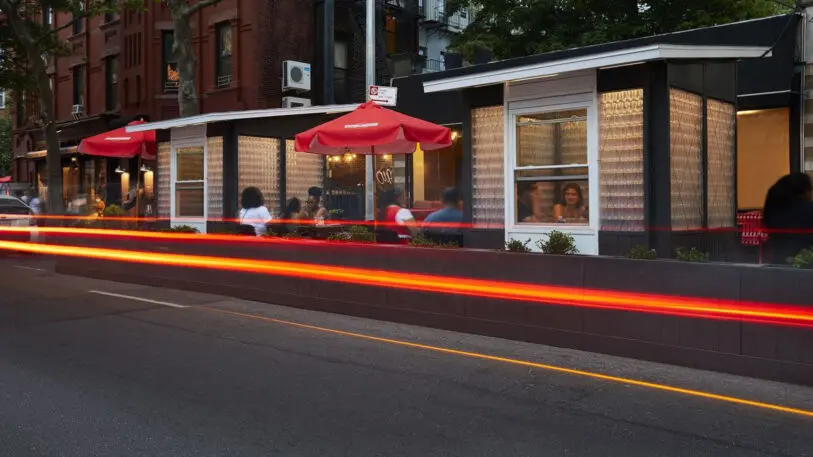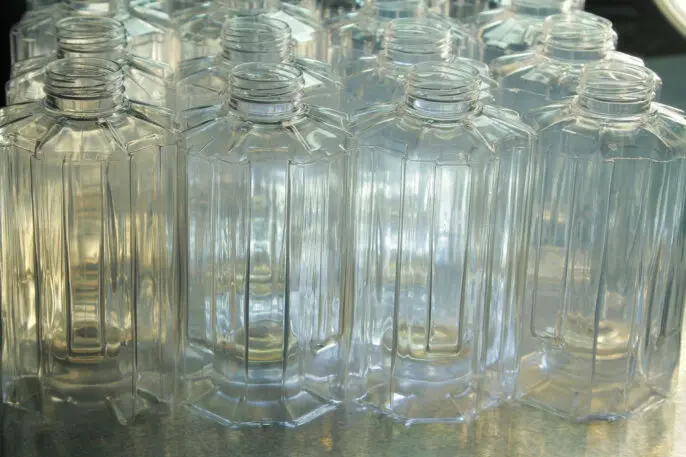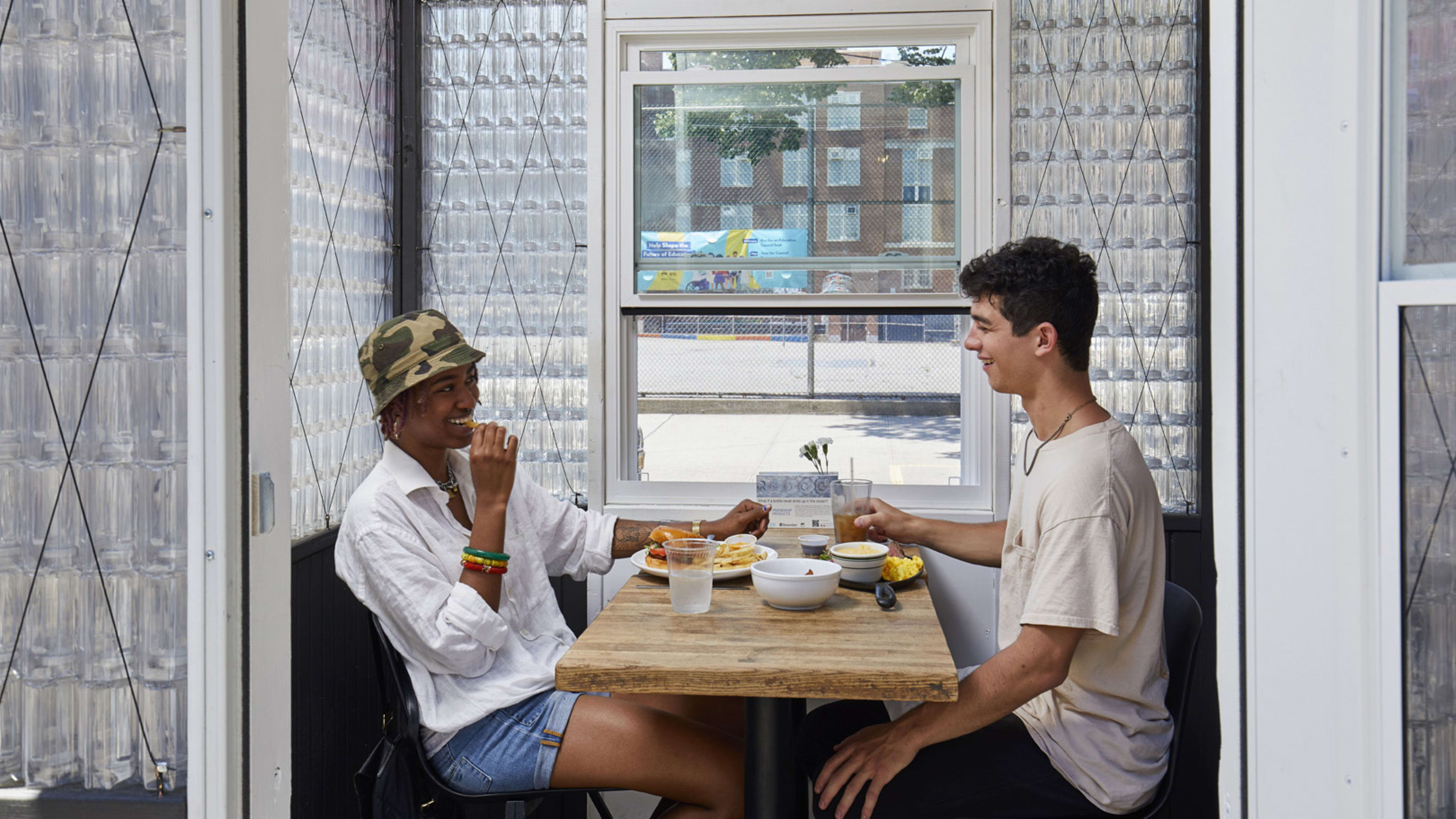On the street outside Peaches Kitchen & Bar in Brooklyn, New York, two translucent outdoor dining structures are now standing like oversized glowing lanterns. Like the outdoor dining spaces of other restaurants across the city and around the world, these structures popped up quickly during the pandemic. But unlike these other facilities, the structures outside Peaches are made out of interlocking plastic bottles.
Called Friendship Bottles, the building blocks of these dining cabins are a specially designed type of container that is intended to bring a practical second life to plastic bottles. Notched and flanged with connectable forms, the bottles are LEGO-like plastic bricks that can be reused as building materials after their initial use as liquid containers.

It’s an idea that’s been bubbling in the beverage industry for decades. In the 1960s, the beermaker Heineken developed an interlocking and stackable glass beer bottle that was intended to be reused as a building material post-consumption, but the concept never made it to market.

Carlson says counteracting the environmental waste of the plastic bottle industry is only part of the goal. The ideal use is in disaster relief. “In a disaster scenario, if you’re hauling in a bunch of goods, you always need water and cooking oil and grain, but you also need shelter,” Carlson says. Flats of bottled water and other goods could be shipped to disaster areas, and once the bottles are emptied, they can be used to build temporary shelters. “That’s as close to a no-brainer that these are compelling,” Carlson says.
Since 2018, the nonprofit has been working with researchers from Rensselaer Polytechnic Institute in Troy, New York, to explore the architectural potential of the bottles. Joshua Draper is a lecturer at the Institute’s Center for Architecture Science and Ecology and he’s been developing and testing ways the bottles can be effectively used on the ground during extreme disasters. “What we understand from studying in the field is it’s very much about being able to deliver a system that’s flexible, that can be deployed in a number of different ways, and that’s also incremental so that you can gradually make changes to what you’re doing,” he says. “We’re pretty close with a design that’s very buildable by a small family and that we think someone who doesn’t have a lot of building training nor a lot of tools and materials nevertheless could build.”

The cabins were built and have been in use since April. They proved resilient during the recent hurricane-strength storms that swept through the region, and Draper says the structures are both comfortable and visually striking to be in. “Everything around you becomes kind of ghostlike,” he says. “You see these washes of color and light from passing cars.” This effect, he says, works both inside and out. In the context of a disaster, a small solar-powered light inside a structure built from Friendship Bottles would make it glow like a lantern. “Light is tantamount to safety in a lot of disaster situations,” Draper says.

For Carlson, the dining cabins are admittedly a more trivial use of Friendship Bottles than their disaster relief intention, but the real-world build is actually helping make the case for the bottles to be considered for use by disaster relief organizations.
“The big, big hurdle when talking to people is they say but can you really make things with them? Is this something people will really be able to use? Is this just a cute idea or is it actually practical?” says Carlson. “To have cabins sitting on a street in New York City that can withstand category 2 hurricane force winds really helps.”
Recognize your brand’s excellence by applying to this year’s Brands That Matter Awards before the early-rate deadline, May 3.
